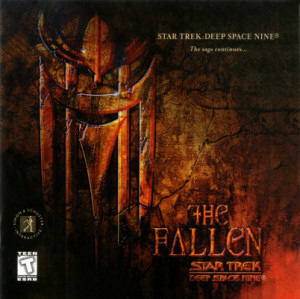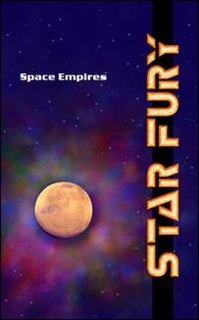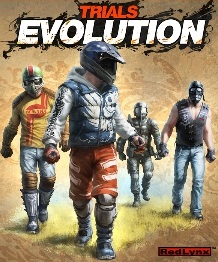
Galactic Civilizations II: Dread Lords is a 4X turn-based strategy by Stardock for Microsoft Windows. It is the sequel to the original Galactic Civilizations, and was released at retail and on Stardock's online subscription service, TotalGaming.net, on February 21, 2006. An expansion, Dark Avatar, was released in February 2007. A second expansion, Twilight of the Arnor, was released in April 2008.

Master of Orion II: Battle at Antares is a 4X turn-based strategy game set in space, designed by Steve Barcia and Ken Burd, and developed by Simtex, who developed its predecessor Master of Orion and Master of Magic. The PC version was published by MicroProse in 1996, and the Apple Macintosh version a year later by MacSoft, in partnership with MicroProse. The game has retained a large fan base, and is still played online.

Homeworld is a real-time strategy video game developed by Relic Entertainment and published by Sierra Studios on September 28, 1999, for Microsoft Windows. Set in space, the science fiction game follows the Kushan exiles of the planet Kharak after their home planet is destroyed by the Taiidan Empire in retaliation for developing hyperspace jump technology. The survivors journey with their spacecraft-constructing mothership to reclaim their ancient homeworld of Hiigara from the Taiidan, encountering a variety of pirates, mercenaries, traders, and rebels along the way. In each of the game's levels, the player gathers resources, builds a fleet, and uses it to destroy enemy ships and accomplish mission objectives. The player's fleet carries over between levels, and can travel in a fully three-dimensional space within each level rather than being limited to a two-dimensional plane.

Star Trek: Deep Space Nine: The Fallen (2000) is a third-person shooter video game, developed by The Collective, and published by Simon & Schuster. The game is loosely based on a trilogy of novels by Judith and Garfield Reeves-Stevens called Millennium: The Fall of Terok Nor, The War of the Prophets, and Inferno. The setting is the Deep Space Nine space station featured in the American science fiction television series Star Trek: Deep Space Nine.

Space Empires: Starfury is an action video game developed by Malfador Machinations and published by Shrapnel Games on September 22, 2003. The game is set in a Space Empires universe containing planetary systems linked by warp points, or wormholes. The game allows the player to control a single spaceship to explore the universe.
Crysis is a first-person shooter video game series created by German developer Crytek. The series revolves around a group of military protagonists with "nanosuits", technologically advanced suits of armor that give them enhanced physical strength, speed, defense, and cloaking abilities. The protagonists face off against hostile North Korean soldiers, heavily armed mercenaries, and a race of technologically advanced aliens known as the Ceph, who arrived on Earth millions of years ago and have recently been awakened. The series consists of three main installments, a standalone spinoff of the first game with a separate multiplayer title, and a compilation.

Neverwinter Nights is a series of video games developed by BioWare and Obsidian Entertainment, based on the Forgotten Realms campaign setting of the Dungeons & Dragons role-playing game. It is unrelated to the 1991 Neverwinter Nights online game hosted by AOL.

Dust 514 was a free-to-play first-person shooter developed by CCP Games for the PlayStation 3. Dust 514 took place in New Eden and was directly connected to CCP's game Eve Online. There was direct interaction between the two; player actions in one game affected the political, economic, legal, environmental, and social status of the other. The two games were officially connected on January 10, 2013 in preparation for the open beta on January 22. The full game was released worldwide on May 14, 2013. While previews of the game were highly positive, the full game received a mixed reception upon its initial release. It received constant updates and hotfixes deployed after release. The game was shut down by CCP on May 30, 2016.

Snoopy Flying Ace is a dogfighting video game based on Charles M. Schulz's Peanuts franchise and developed by WildWorks for the Xbox Live Arcade service on the Xbox 360. It was announced on November 10, 2008 and released on June 2, 2010. An unofficial sequel to the 2006 video game Snoopy vs. the Red Baron, it features a similar World War I setting. Snoopy is tasked with defeating several members of the Flying Circus, a special flight squadron in the Luftstreitkräfte, and its commander, Manfred von Richthofen, also known as the Red Baron.

Infinity Blade is an action role-playing game developed by Chair Entertainment and Epic Games and released through the Apple App Store on December 9, 2010. It was the first iOS video game to run on the Unreal Engine. In the game, the unnamed player character fights a series of one-on-one battles in a derelict castle to face the immortal God King. When in battle, players swipe the screen to attack and parry, and tap the screen to dodge and block enemy attacks. Upon defeat, the player restarts the game as the character's descendant with the same items and experience level.

Iron Brigade, formerly titled Trenched, is a 2011 video game, developed by Double Fine Productions, published by Microsoft Studios as a downloadable Xbox Live Arcade title on the Xbox 360, and set for release as a Microsoft Windows title in 2012. Announced at the 2011 Game Developers Conference by Tim Schafer, Iron Brigade is a hybrid tower defense and third-person shooter game, set after World War I in an alternate reality, where the player controls units from the Mobile Trench Brigade to fight off robotic species called the Monovision. The player controls giant mecha-style robots with weapon and armor customization through a variety of missions set across the world. The game was released on the Xbox Live service on June 22, 2011, with a delayed release in certain European areas due to trademark issues with the title, with its release scheduled for November 30, 2011 but was ultimately released on December 1, 2011 under the alternate name Iron Brigade. The name of the title was updated worldwide to Iron Brigade alongside the European release.

Choplifter HD is a video game developed by inXile Entertainment and released on January 10, 2012. It is a 3D polygonal remake of the 1982 game Choplifter by Dan Gorlin. inXile hired Gorlin to serve as a design consultant for the game. As in the original game, players fly missions in a helicopter, defeating enemies and rescuing people. Originally released for Windows, Xbox 360 and PlayStation 3, the game was subsequently ported to the Ouya as well as Android devices. Choplifter HD was lauded for being true to the original, retaining the gameplay the series was known for, but was criticized for its high level of difficulty.

Trials Evolution is a racing video game for the Xbox 360 and Microsoft Windows in which each player controls a motorcycle trials rider who traverses an obstacle course. The game was developed by RedLynx and published by Microsoft Studios. It is a follow up to Trials HD of 2009 and successor to several preceding Trials games by the same developers.

FTL: Faster Than Light is a space-based top-down real-time strategy roguelike game created by indie developer Subset Games, which was released for Microsoft Windows, macOS and Linux in September 2012. In the game, the player controls the crew of a single spacecraft, holding critical information to be delivered to an allied fleet, while being pursued by a large rebel fleet. The player must guide the spacecraft over eight sectors, each with planetary systems and events procedurally generated in a roguelike fashion, while facing rebel and other hostile forces, recruiting new crew, and outfitting and upgrading their ship. Combat takes place in pausable real time, and if the ship is destroyed or all of its crew lost, the game ends, forcing the player to restart with a new ship.

Strike Suit Zero is a space flight combat game developed by Born Ready. Strike Suit Zero seeks to revive the space combat genre by introducing "strike mode" as a new element to the dogfight-based gameplay of classic space combat games. Strike Suit Zero takes its inspiration from numerous different franchises, most notably Elite and related franchises: Homeworld, Freelancer, Colony Wars, Star Wars, Gundam, Macross and FreeSpace. The game is built on a proprietary engine. It was released for Microsoft Windows on January 23, 2013, and for OS X and Linux on August 9, 2013.

Mass Effect 2: Lair of the Shadow Broker is a downloadable content pack developed by BioWare and published by Electronic Arts for the 2010 action role-playing video game Mass Effect 2. It was released for Microsoft Windows and Xbox 360 in 2010, and is included in the PlayStation 3 version of Mass Effect 2, which was released in 2011. Set after the events of the Mass Effect: Redemption comic book, Lair of the Shadow Broker follows the story of information broker Liara T'Soni and her efforts to find an information dealer known as the Shadow Broker.
Positech Games is a video game developer based in the United Kingdom. The company was founded in 1997 and belongs to the former Lionhead Studios programmer Cliff Harris. The company has published a number of PC games. One of the most notable publications by Positech is the strategy game of policy shift Democracy. Positech is known for making complex simulation games.

Death or Glory is a multidirectional scrolling shooter developed by Wise Owl Software and published by CRL Group in 1987 for the Commodore 64, ZX Spectrum, and Amstrad CPC. The player pilots a space ship and encounters an alien invasion that they then have to defeat. The game received average to negative reviews.

Starfall Online is an upcoming MMO real-time strategy video game with wargame elements, that mixes intense tactical combat with in-depth spaceship customization. The project is developed by independent Russian company Snowforged Entertainment.

Good Job! is a 2020 puzzle video game developed by Paladin Studios and published by Nintendo for the Nintendo Switch console. The player controls a megacorporation CEO's son in completing exaggerated office tasks in destructive playground-style puzzles to climb the corporate ladder. Although there are normal ways to complete the levels. the player can be as destructive and creative as they like to beat the level faster.


















